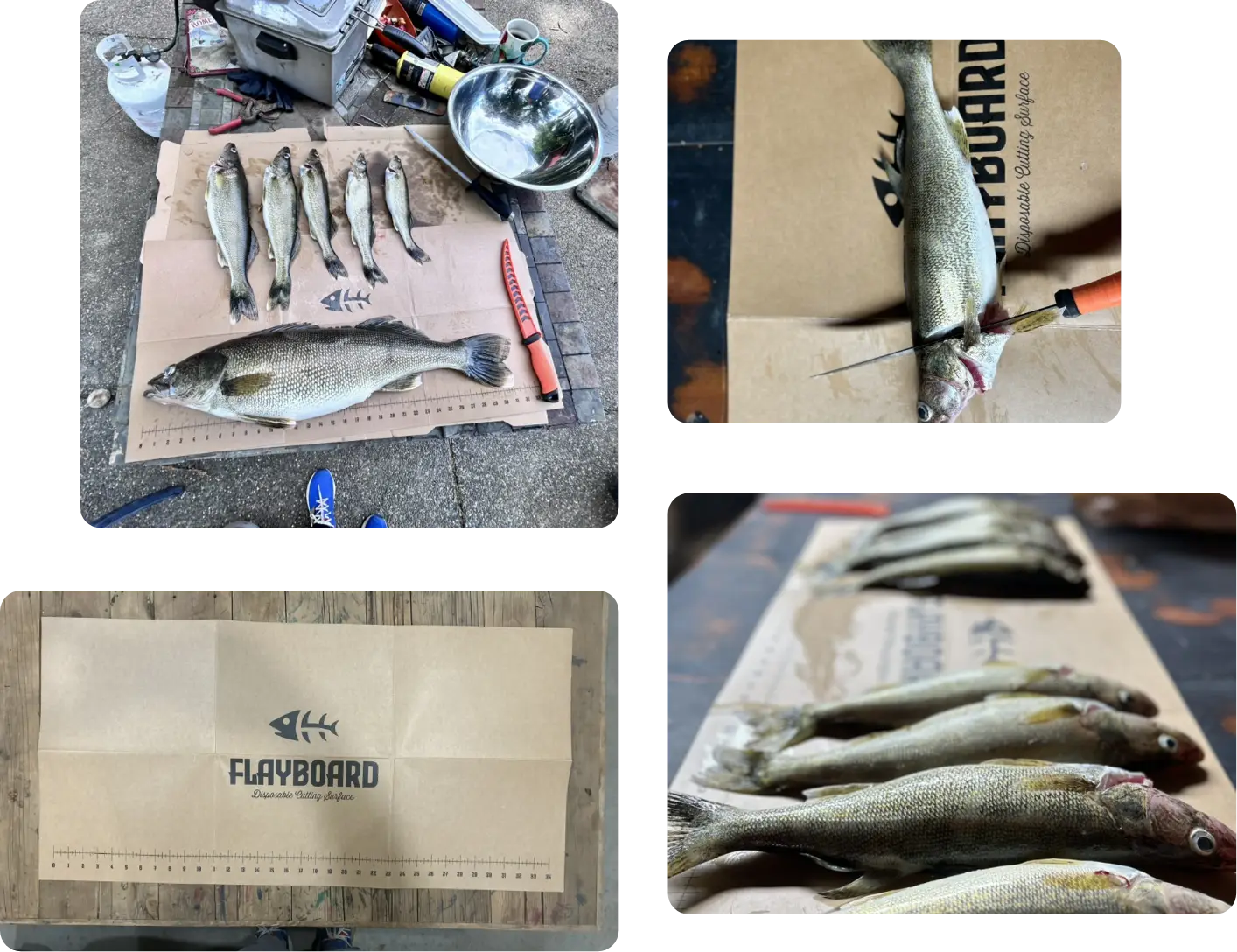
Essential Tools For Filleting Fish
Before You Begin, Gather These Tools:
1. A sharp fillet knife 2. A cutting board (preferably with a clamp) 3. A scaler or the back of a knife 4. A pair of pliers (for removing pin bones) 5. A bowl for discards 6. Paper towels
Having the right equipment makes the process smoother and safer. A sharp knife is crucial for clean cuts and efficient filleting.
How To Clean A Fish: Step-By-Step Guide
1. Scaling The Fish
Start by scaling your fish:
1. Hold the fish firmly by the tail.
2. Using a scaler or the back of a knife, scrape against the grain of the scales from tail to head.
3. Rinse the fish to remove loose scales.
Some fish, like catfish, don't need scaling. For salmon, you can choose to leave the scales on if you plan to grill it with the skin.

General Technique: How To Fillet A Fish

Now, Let's Cover The Basic Filleting Technique:
1. Place the fish on its side on your cutting board. 2. Make a cut behind the gills and pectoral fin, down to the backbone. 3. Turn the knife parallel to the backbone and cut along the length of the fish, separating the fillet from the ribs. 4. Once you reach the tail, cut through to remove the fillet. 5. Flip the fish and repeat on the other side. 6. Remove the skin by placing the fillet skin-side down and cutting between the flesh and skin.
This general technique works for many round fish species. Let's look at some specific examples.
How To Fillet A Walleye
Walleye is a popular freshwater fish known for its delicate, flaky meat. Here's how to fillet a walleye:

Having the right equipment makes the process smoother and safer. A sharp knife is crucial for clean cuts and efficient filleting.

2. After removing the fillet, check for the Y-bones. These are small bones in the upper rib cage area.

3. To remove Y-bones, make a V-cut along the fillet where you feel the bones, then lift out this strip of meat.

4. Alternatively, you can leave the Y-bones in and remove them after cooking, as they tend to soften.
Walleye fillets are excellent for pan-frying or baking.

How To Fillet A Trout
Trout Has A Delicate Flavor And Is Often Cooked Whole, But Filleting Is An Option:
1. Scale the salmon if you plan to eat the skin (it's delicious when crispy). 2. Cut off the head behind the gills. 3. Run your knife along the backbone from head to tail, separating the fillet. 4. Repeat on the other side. 5. Remove the pin bones using pliers.
Trout fillets are fantastic when grilled or smoked.
How To Fillet A Salmon
Salmon Is Prized For Its Rich Flavor And Omega-3 Fatty Acids. Here's How To Fillet This Popular Fish:
1. Scale the salmon if you plan to eat the skin (it's delicious when crispy). 2. Make a cut behind the gills and pectoral fin down to the backbone. 3. Cut along the backbone from head to tail, removing the fillet. 4. Repeat on the other side. 5. Remove the pin bones using pliers, pulling them out at a 45-degree angle.
Salmon fillets can be baked, grilled, or used raw in sushi.


Tips For Perfect Fish Fillets
 Keep Your Knife Sharp For Clean Cuts.
Keep Your Knife Sharp For Clean Cuts. Let The Weight Of The Knife Do The Work; Don't Force It.
Let The Weight Of The Knife Do The Work; Don't Force It. Practice On Smaller Fish Before Tackling Larger Ones.
Practice On Smaller Fish Before Tackling Larger Ones. If You're New To Filleting, Consider Leaving The Skin On For Added Stability.
If You're New To Filleting, Consider Leaving The Skin On For Added Stability.
How To Store Fish Fillets
Proper Storage Is Crucial For Maintaining Freshness:
1. Rinse fresh water fish fillets in cold water and pat dry with paper towels. For salt water fish, simply proceed to Step 2 without rinsing.
2. Wrap tightly in plastic wrap or place in airtight containers.
3. Store in the coldest part of your refrigerator and use within 1-2 days.
4. For longer storage, vacuum seal and place into your freezer. Be sure to get all the air out of your bags to prevent freezer burn.


Cooking Your Fish Fillets
Now That You Have Perfect Fillets, Here Are Some Quick Cooking Ideas:
 Keep Your Knife Sharp For Clean Cuts.
Keep Your Knife Sharp For Clean Cuts. Let The Weight Of The Knife Do The Work; Don't Force It.
Let The Weight Of The Knife Do The Work; Don't Force It. Practice On Smaller Fish Before Tackling Larger Ones.
Practice On Smaller Fish Before Tackling Larger Ones. If You're New To Filleting, Consider Leaving The Skin On For Added Stability.
If You're New To Filleting, Consider Leaving The Skin On For Added Stability.
Conclusion
Mastering the art of filleting trout opens up a world of culinary possibilities. With practice, you'll be able to clean and fillet a trout quickly and efficiently, whether you're streamside or in your home kitchen. Remember, the key to great trout is freshness, so clean and fillet your catch as soon as possible for the best flavor and texture.
Whether you're a beginner angler or a seasoned fisherman, knowing how to clean trout and create perfect trout fillets is a valuable skill that enhances both your outdoor experience and your dining table. Happy fishing and bon appétit!
Shop Now



